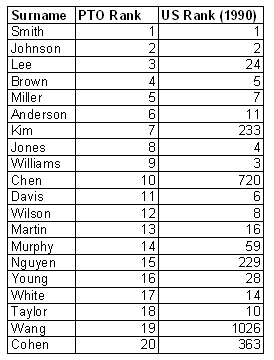Sorry, no fancy cards this year.
December 2006
Women as Patentees
Patents are intended to lure potential inventors into the business of innovation. The truth is, however, that very little is known about how patents really drive innovation.
Historically, only a very small number of women have obtained patents. Data from historic studies:
- 1790 – 1895: About 1% were granted to women;
- 1905 – 1921: About 1.4% were granted to women;
- 1954: 1.5% of issued patents included women inventors;
- 1977: 2.6% listed one or more women as inventors;
- 1996: 9.2% listed one or more women as inventors.
Since patentees do not list their sex, all of these studies rely upon segregating inventors according to traditional first-names.
2006: In my own recent study, I looked at a sample of 150,000+ patents issued between 1999 and 2006. I then made a list-ranking of first-names of first-listed inventors. Can anyone guess how many of of the top-100 inventor-names were traditionally female names???
L&W v. Shertech (Fed. Cir. 2006).
Setup: Although L&W had multiple products, both parties approached infringement as “all or nothing.” Shertech presented evidence as to infringement of one of the products and the remaining products were essentially ignored.
Rule: “When a patentee with the burden of proof seeks summary judgment of infringement, it must make a prima facie showing of infringement as to each accused device before the burden shifts to the accused infringer to offer contrary evidence.”
Holding: Summary judgment of infringement was reversed because it did not present sufficient evidence of infringement as to the particular products.
Plumtree: DJ Jurisdiction, On-Sale Bar

Declaratory Judgment Jurisdiction: The Datamize patents cover software authoring tools for creating software kiosks. Datamize had earlier sued Plumtree for patent infringement and had also told Plumtree that it would be infringing the soon-to-issue continuation application. When the continuation did issue, Plumtree filed a declaratory judgment action — giving the CAFC one last opportunity to opine on its reasonable apprehension test before the Supreme Court issues its MedImmune decision in early 2007.
A declaratory judgment action requires an actual controversy between interested parties. The DJ plaintiff must show (1) some action by the patentee that creates a reasonable apprehension of facing a patent infringement lawsuit and (2) some activity on the part of the DJ plaintiff that could constitute infringement. With a few bright-line exceptions (such as that seen in MedImmune), the court looks to the totality of the circumstances when determining whether a reasonable apprehension of suit exists.
Here, the court found that the prior suit on similar technology exhibited a “course of conduct” indicating a “willingness to protect [its patented] technology”and thus “created a reasonable apprehension of suit.”
On Sale Bar: Once jurisdiction was established, the CAFC looked to determine whether the Datamize patents were invalid for being on-sale more than one year prior to the filing of the application. Here, the appellate panel found that sale of a kiosk did not violate the on-sale bar because the patents did not cover the kiosks themselves. The court noted, however, that the on-sale bar would be triggered if either (1) the sales contract required use of the patented method or (2) the patented method was actually used to complete the contract prior to the critical date. Plumtree, however, could not prove either of those — the agreement “did not unambiguously require use of the patented method” and there was no evidence that the patented method was actually performed prior to the critical date.
Notes: This is the second CAFC opinion involving these two parties. The earlier case involved the same technology but a different patent. That patent was invalid as indefinite because the claims included the terms “aesthetically pleasing.”
Judge Moore Opinions: Short, Focused, and To-The-Point

New Circuit Court Judge Kimberly Moore’s first opinion is likely to be predictive of her future work — short, focused, and to-the-point.
This case involves a pretty neat invention of a tissue holder for an automobile visor. The BPAI had rejected the claims as anticipated, but the PTO later conceded that the cited reference (relating to a golf-tee holder that clips to a lapel) was not anticipatory.
The PTO is fully expected to present a new grounds of rejection. In all likelihood, the patent will never issue because another round of appeal would be prohibitively expensive for this type of invention.
Vacated and Remanded.
- This does not really count as Judge Moore’s first opinion because it is a non-precedential opinion. In a few weeks, we’ll get the real one.
Microsoft v. AT&T: Transnational Patent Law At The Supreme Court
Microsoft v. AT&T (Supreme Court 2006)
Transnational patent law is a hot topic, and one the Supreme Court cannot ignore. The issue de jour involves the question of unauthorized export of patented software. AT&T holds the speech compression patent that is infringed by Microsoft Windows. (RE 32,580). Microsoft exports the software code from Redmond to various international locations. Once abroad, the code is then copied and installed in computers that are then sold abroad. As the invention is claimed, the code alone does not infringe. Rather, infringement would only occur once the code is combined with the computer hardware.
Under traditional notions of patent law, Microsoft’s actions are not infringement because the code alone does not infringe the patent, and (for the purposes of this case) the code is not combined with the hardware within the U.S.
Here, however, traditional notions of territoriality have been supplanted by statute. Under 35 U.S.C. 271(f), supply of only a portion of a component of a patented invention from the U.S. can be infringement.
35 U.S.C. 271(f) prohibits the “suppl[y] . . . from the United States . . . [of] all or a substantial portion of the components of a patented invention . . . in such manner as to actively induce the combination of such components outside of the United States,” as well as the “suppl[y] . . . from the United States [of] any component of a patented invention that is especially made or especially adapted for use in the invention.”
Microsoft, of course, wants to avoid infringing the U.S. patent for its activity abroad and gives two separate reasons why its activity of exporting software do not fall within the parameters of 271(f). (I) Software code is an intangible string of information not a “component” as required by the statute. (II) Because copies of the code were used to create the infringing software/hardware combination, no physical particle that Microsoft exported actually became part of the finished product. According to Microsoft, this means that nothing in the infringing combination was actually supplied from the U.S. as required by the statute. I term these two arguments the tangibility requirement and the molecular conservation requirement.
Microsoft and its supporters have now filed their merits briefs to the Supreme Court, and my reading of their arguments is that there is strong support for molecular conservation, but only weak support for tangibility. The Bush Administration supports this distinction in its brief filed jointly by the DOJ and PTO.
On tangibility, the Government argues that software can certainly be a component, and that the statute is not limited to “only tangible components” as Microsoft suggests. Although not cited by the Government, Section 271(c) provides a statutorily distinct way of limiting components. In referring to infringement through importation, that clause identifies only components of certain types of inventions such as machines and compositions.
On molecular conservation, the Government correctly notes that the statute requires that the exported components be the same components that are combined in the infringing manner. “Conduct that merely induces the combination of foreign-made components does not violate Section 271(f).” The statute, according to the Gov’t, leaves foreign manufacturers “free to manufacture and assemble copies of the identical components overseas” so long as none of the components actually assembled were made within the US. Applying their argument to this case, we know that the software was copied and only those copies were combined with hardware in a would-be infringing manner.
A group of electronics companies led by Amazon filed a colorful brief that also supports the requirement of molecular conservation.
No matter where their unique arrangement was invented or dictated, if each molecule in the machine was supplied from outside the U.S., then no component was supplied from the U.S. In the present case, Microsoft did not supply even a single molecule of the foreign machines at issue.
Amazon also raises the slippery slope issue. According to the brief, if Microsoft is liable here, then the Court would open the door to infringement for export of blueprints or a CAD/CAM design scheme. That result, the brief argues, goes against congressional intent. As an aside, Amazon cited Wikipedia but did not include it in its list of “authorities.” Although they do not cite it, the Pellegrini case holds that plans or instructions for a patented item cannot serve as components under 271(f).
In support of the molecular argument, a group of professors led by professors Lemley (Stanford) and Duffy (GWU), looked appropriately at the language of 271(f):
[A]s a matter of grammar that the phrase “such components” refers back to the components that have been “supplied” from United States. Thus, the plain language of the statute requires that inducing an extraterritorial combination constitutes an act of infringement if and only if the combined components are in fact the same components that were “supplied in or from” the United States.
For the professors, supplying exact copies does not meet the requirement. Most of the briefs come-up with some hypothetical metaphor to explain their situation — a guy memorizing some code and flying on an airplane, a hard-copy print out of some code that runs a fuel-injection system, CAD/CAM instructions, blueprints, etc. The idea apparently is that if we allow copies of software to be considered components, then these situations necessarily also provide for infringement actions. More accurately, however, they are just poor hypotheticals.
Software as Patentable Subject Matter: The anti-patent activist group SFLC led by Dan Ravicher and Eben Moglen also filed a brief that may be the dark-horse of this debate. Their brief asks the Court to take a fresh look at the patentability of software.
Software can not be a “component[] of a patented invention” under 35 U.S.C. § 271(f) because software is not patentable subject matter under 35 U.S.C. § 101. As such, the Federal Circuit’s holding to the contrary in this case is erroneous and should be reversed.
It would be odd for the Court to decide the 101 issue in this case after dismissing LabCorp earlier this year. However, I expect at least one concurring opinion supporting the ideas in this brief.
Impact on Software Industry: If Microsoft loses here, it will at least have a clear avenue to avoid future infringement. Unfortunately for US business, that avenue is to move all software development activities abroad so that components are never exported. This harmful effect was recognized and discussed in SIIA’s brief. SIIA is an industry group of software & technology companies who want to continue to design products in the US, but manufacture those products abroad. This argument is punctuated by BSA’s questionable hyperbole: “The purpose of patent protection is to encourage domestic innovation, not to drive it overseas.”
Impact in Biotech: Although not yet a viable industry, this could have a potentially large impact on biotechnology patent issues. Like software, DNA code (or other biologics) could be shipped from the U.S. to be copied abroad and incorporated into an organism in an infringing manner. Even more abstract, the export may merely involve transmitting a sequence listing that would be used to reproduce the sequence abroad. Any decision on software should consider the potential impact on these areas as well.
Methods: What Professor Wegner has called the “Bizarre Twist” of this case involves the CAFC’s notion of export of components of method claims. In Union Carbide v. Shell, the court found that methods could indeed have components, and those included items used in the method (such as a catalyst). Thus, in that case, the defendant could be held liable for exporting a stock catalyst if it intended to use the ingredient in a would-be infringing manner. Shell settled its case with Union Carbide, but has filed an amicus brief in this case, arguing that the Federal Circuit “seriously erred” by declaring that “every form of invention eligible for patenting falls within the protection of section 271(f).”
Statutory Construction Excludes Methods?: Shell compares the use of the term “component” in 271(f) its use in 271(c) — the section addressing importation. In 271(c), Congress explicitly limited components to “component[s] of a patented machine, manufacture, combination, or composition,” but also included a provision excluding importation of materials used in a patented process. Shell’s argument: because 271(f) does not include the provision discussing materials used in a patented process, it cannot cover processes. Of course, the unstated counter-argument to shell is that components discussed in 271(c) are specifically limited to components of machines, while 271(f) components are not so limited — indicating that “component” in 271(f) should receive a broader interpretation.
International Law: All of the transnational patent issues have an impact on international law issues. FICPI, a Swiss-based organization of patent folks filed its brief asking the the U.S. to keep its patents territorial and avoid stomping on the toes of others (as “young nations” are bound to do). FICPI’s implication that the Supreme Court is bound by the Paris Convention is plainly wrong. The Paris Convention is not U.S. law. However, their point is well-taken, if 271(f) covers software, it thwarts the efforts of other countries to eliminate software patents.
Documents:
- On the Merits
- Petitioner: Microsoft Brief;
- Amicus: US Government;
- Amicus: Law Professors (Lemley & Duffy);
- Amicus: Amazon;
- Amicus: SIIA (Industry Org.);
- Amicus: SFLC (Moglen & Ravicher);
- Amicus: Shell Oil (Method Claims);
- Amicus: Intel;
- Amicus FICPI;
- Amicus Autodesk
- Amicus BSA (Industry will be destroyed if AT&T wins);
- Amicus Yahoo!.
- Petitioner: Microsoft Petition
- Petitioner: Microsoft Petition Appendix
- Respondent: AT&T Opposition
- Petitioner: Microsoft Reply in Support
- Respondent: AT&T Supplemental Brief
- Petitioner: Microsoft Supplemental Brief
- Amicus: Software and Information Industry Association in Support of Microsoft
- Amicus: Government in Support of Microsoft
Important recent 271(f) cases:
- NTP v. Research in Motion, (271(f) “component” would rarely if ever apply to method claims).
-
AT&T v. Microsoft, 414 F.3d 1366 (Fed. Cir. 2005) (271(f) “component” applies to method claims and software being sold abroad);
-
Union Carbide v. Shell Oil (Fed. Cir. 2005) (271(f) “component” applies to method claims).
-
Eolas v. Microsoft, 399 F.3d 1325 (Fed. Cir. 2005) (271(f) “component” applies to method claims and software);
-
Pellegrini v. Analog Devices, 375 F.3d 1113 (Fed. Cir. 2004) (271(f) “component” does not cover export of plans/instructions of patented item to be manufactured abroad);
-
Bayer v. Housey Pharms, 340 F.3d 1367 (Fed. Cir. 2003) (271(g) “component” does not apply to importation of ‘intangible information’).
Notes:
-
I will be updating this page as more briefs are filed.
-
I will be talking about cross-border liability at Santa Clara University’s 25th Annual Computer & High Technology Law Journal Symposium on January 26 in San Jose. Information here.
Inducement Requires Knowledge of The Patent and Culpable Mens Rea

The interesting portion of this opinion rests in Section III.B, where the CAFC convened an en banc panel to clarify that “inducement” of infringement requires intent to induce actual infringement, which necessarily requires knowledge of the patent.
Section 271(b) of the Patent Act spells out the tort: “Whoever actively induces infringement of a patent shall be liable as an infringer.”
Applying the language of Grokster, the CAFC clarified that in patent cases, “the intent requirement for inducement requires more than just intent to cause the acts that produce direct infringement. . . . [I]nducement requires evidence of culpable conduct, directed to encouraging another’s infringement.” According to the court, this culpable conduct requires knowledge of the patent and an intent to induce infringement of the patent.
As Kevin Noonan has noted, the distinction in this case is that “there was evidence (an opinion of counsel and testimony from corporate officials) that the defendant believed that the accused behavior was not infringement. Thus, CAFC said the evidence supported the trial court’s finding that the defendant did not intend to induce infringement, which was the mens rea required for liability under 35 USC 271(b).”
Even under DOE, “predetermined” combo must be determined beforehand
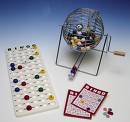
Planet Bingo is the exclusive licensee of two patents covering a way to play bingo. This game combines the numbers with an indicator (such as the color red) to give enhanced awards. The patent claims a “predetermined” winning combination, and that is where the dispute lies.
In the accused game of “rainbow bingo,” the color of the first ball chosen serves as the indicator. Since that color is not known before the game begins, the court found it was not “predetermined.” as required by the claims.
Planet Bingo, however, asserted infringement under the DOE. Although the defendant’s indicator color is not known before the game begins, it is known immediately after the first bingo ball is drawn — something that is equivalent. The CAFC disagreed, finding that under Warner-Jenkinson, a color that is “predetermined” cannot, as a matter of law, be equivalent to a color that is selected immediately after the game starts.
Here, the court focused particular attention on foreseeability of the asserted equivalent — apparently assuming that most variations in the bingo-arts would be foreseeable.
The Best Christmas Present
[UPDATE: Best presents for Christmas 2007]
No joke — A Christmas present that actually works. I visited my sister’s house recently noticed that they are still regularly using the gift that I gave to them last Christmas! It is a simple device that receives a radio-signal from ACCUWeather and provides a 5–day forecast. A partner at MBHB initially recommended it to me.
- $85 from Brookstone
(was $13 from Radio-Shack)
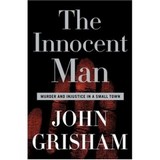
What to get for me? How about the newest Grisham? The Innocent Man: Murder and Injustice in a Small Town
Search Patents Via Google
Try the new Google Patent Search here. Advanced search here.
DDC Comments: The greatest benefit is that pre-1976 patents are now text-searchable. This is huge for historians, but I suspect that we will now see more citations based on these older documents. Google searches are very fast as compared to other search engines. One problem: Google is best at finding the top-twenty references related to your search. Google is much worse at doing exhaustive searches. Thus, if you want to find every patent that mentions a certain term, you will probably not be successful (at this point) with the Google Patent Search. Finally, Google does not yet have a link to the PDF version of the document.
Please try out the search and leave your own comments below.
Other useful free patent search engines:
- USPTO Search
- TACSY Search
- EPO ESPACE
- CAMBIA Patent Lens (Via Gorman at SCU)
USPTO Announces Release of Private PAIR 7.0: Live Online Launch and Training
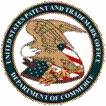
The PTO will hold a 90 minute interactive web-event discussing the new features. Sign up here.
Unjust Enrichment For Stealing Ideas Does Not Create Patent Jurisdiction
Thompson v. Microsoft (Fed. Cir. 2006).
Thompson sued Microsoft for unjust enrichment under Michigan law. Arguing that Microsoft stole his idea, patented it, and implemented it in various products. In its motion to dismiss, Microsoft argued that the claim was preempted by federal patent law. (citing Ultra-Precision).
Instead of hearing the appeal, however, the CAFC declined jurisdiction because the case did not arise under federal patent laws as required by Christianson & Holmes v. Vornado.
Thompson’s well-pleaded complaint does not establish that the right to relief necessarily depends on resolution of a substantial question of federal patent law. Thus, the district court’s jurisdiction does not “aris[e] under” section 1338.
In particular, the court noted that preemption alone does not create jurisdiction. An inventorship issue might create an issue, but Thompson’s claim could have theoretically succeeded without proving inventorship (in the strict patent sense).
Case transferred to the Sixth Circuit Court of Appeals.
PatentDocs: Biotech & Pharma
Blog technology has turned out to be an extremely powerful way for attorneys to rapidly communicate with with the world. Although powerful, only a small percentage really do it right. I am very proud to present the newest blog emerging from McDonnell Boehnen Hulbert & Berghoff attorneys: Patent Docs. They do it right!
 The Authors of "Patent Docs" are patent attorneys and all hold doctorates in a diverse array of biotech and chemical disciplines (hence the name Patent Docs). In addition to in-depth case reviews, the site also has a number of useful regular features, including Biotech News, Court Reports, PTO Rules Updates, and Patent Profiles.
The Authors of "Patent Docs" are patent attorneys and all hold doctorates in a diverse array of biotech and chemical disciplines (hence the name Patent Docs). In addition to in-depth case reviews, the site also has a number of useful regular features, including Biotech News, Court Reports, PTO Rules Updates, and Patent Profiles. In Preliminary Injunction Decision, CAFC Forecasts Post-eBay Jurisprudence
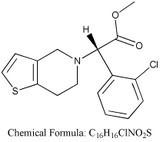
Generic manufacturer Apotex wants to make something similar to Sanofi’s Plavix (clopidogrel bisulfate) and filed an ANDA alleging that Sanofi’s patents were invalid.
The two parties worked together to negotiate a settlement. The agreement, however, was not accepted by state attorneys general even after new terms were presented. Under provisions of the agreement, the regulatory denial killed the settlement and the parties resumed litigation.
Sanofi then filed a motion for preliminary injunction to stop Apotex from selling its product. Within 21 days, the district court issued a PI. (During that time, Apotex shipped six-months of product). Apotex then appealed the PI. Preliminary injunction jurisprudence has its own four-factor test that is similar to that of permanent injunctions. The plaintiff must show:
- Reasonable likelihood of success on the merits of the case;
- Irreparable harm if an injunction is not issued;
- Balance of hardships tipped in favor of the plaintiff; and
- Public interest that is not negatively impacted.
The major difference between the factors for consideration in preliminary injunctive relief and those for permanent relief is that preliminary relief requires a showing of a likelihood of success while permanent relief requires success on the merits as a precondition. Thus, the final three factors will give some indication of how the court will rule in post-eBay injunction cases.
Likelihood of success on the merits: Apotex took the odd position of arguing anticipation based on a broadly worded claim of a prior art patent that was examined during prosecution. The CAFC confirmed that this made the burden of proving invalidity at trial “especially difficult.” On obviousness, the CAFC confirmed that the unpredictability of enantiomer activity made the claimed dextrorotatory formation nonobvious even if the molecule as a whole was known.
On Irreparable Harm: The settlement agreement between the parties included a provision that capped any damages for infringement by Apotex — seemingly an admission that Sanofi would settle for money damages. The court did not buy-into this argument, but only because of the technicality that the agreement also contemplated an injunction.
Balance of hardships tip entirely in Sanofi’s favor because Apotex chose to launch its product under threat of injunctive relief. It could have avoided the situation altogether and thus should not benefit from this factor.
Public Interest: The CAFC continued its line of the “importance of the patent system in encouraging innovation.” Interestingly, the court focuses on how the expense of pharmaceutical inventions necessitates strong patent protection. . . . begging the question of whether less expensive innovations (such as software) have less of a public interest in strong patent protection.
IPO Supports Attorney Fee-Shifting, Opposes PTO Authority
The Intellectual Property Owner’s Association (IPO) has taken a new stand on patent reform through its passage of three specific resolutions in reaction to the pending Senate bill S.3818 that had been supported by Senators Hatch and Leahy. Resolutions:
(1) supporting a requirement that a court award attorney fees to the winning party in most patent cases; [fees “shall” be awarded unless the losing position was “substantially justified”or if the award would be unjust because of special circumstances].
(2) opposing any change to give substantive rule-making authority to the USPTO; and
(3) opposing any right for an interlocutory appeal from claim construction decisions in patent litigation.
Court Retains Article III Jurisdiction To Determine Attorney Fees

The district court dismissed the case with prejudice after the plaintiff gave the defendant a covenant not to sue. Just before trial, the plaintiff gave up and granted a covenant not to sue. The district court dismissed the case, but retained jurisdiction to decide the issue of attorney fees (fees denied).
On appeal, the CAFC first decided the issue of Article III jurisdiction — holding that even after dismissing the case major, the lower court properly retained jurisdiction over the attorney fee issue. The appellate panel then agreed that attorney fees were not justified in this case.
What’s in a name?
Name and contact-information is available for registered US patent attorneys. This weekend, I took a quick look at that database and compared it to US census data. You see lots of law firms with odd names headlining the banner, and I wanted to see whether attorneys with uncommon names were rising to the top — or, instead, if patent attorneys just have uncommon names. I also wanted to see whether the rate of various names could help us deduce anything about minority representation before the PTO
Wider Distribution of Names: In the general American population, 20% of the population is represented by the top 115 surnames. For patent attorneys, however, it takes the top 245 surnames to reach the 20% mark. More generally, the data does show that patent attorneys are more likely to have uncommon names as compared to the US population.
Here’s a look at the top-twenty surnames of patent attorneys. You can see eight of the top-twenty PTO names do not fit within the US Population top-twenty. These are Lee, Kim, Chen, Murphy, Nguyen, Young, Wang, and Cohen.
On the other side, names that are severely underrepresented include Garcia, Martinez, Rodriguez, and Hernandez.
Notes:
- I used the 1990 census data because 2000 census names have not been released yet.


